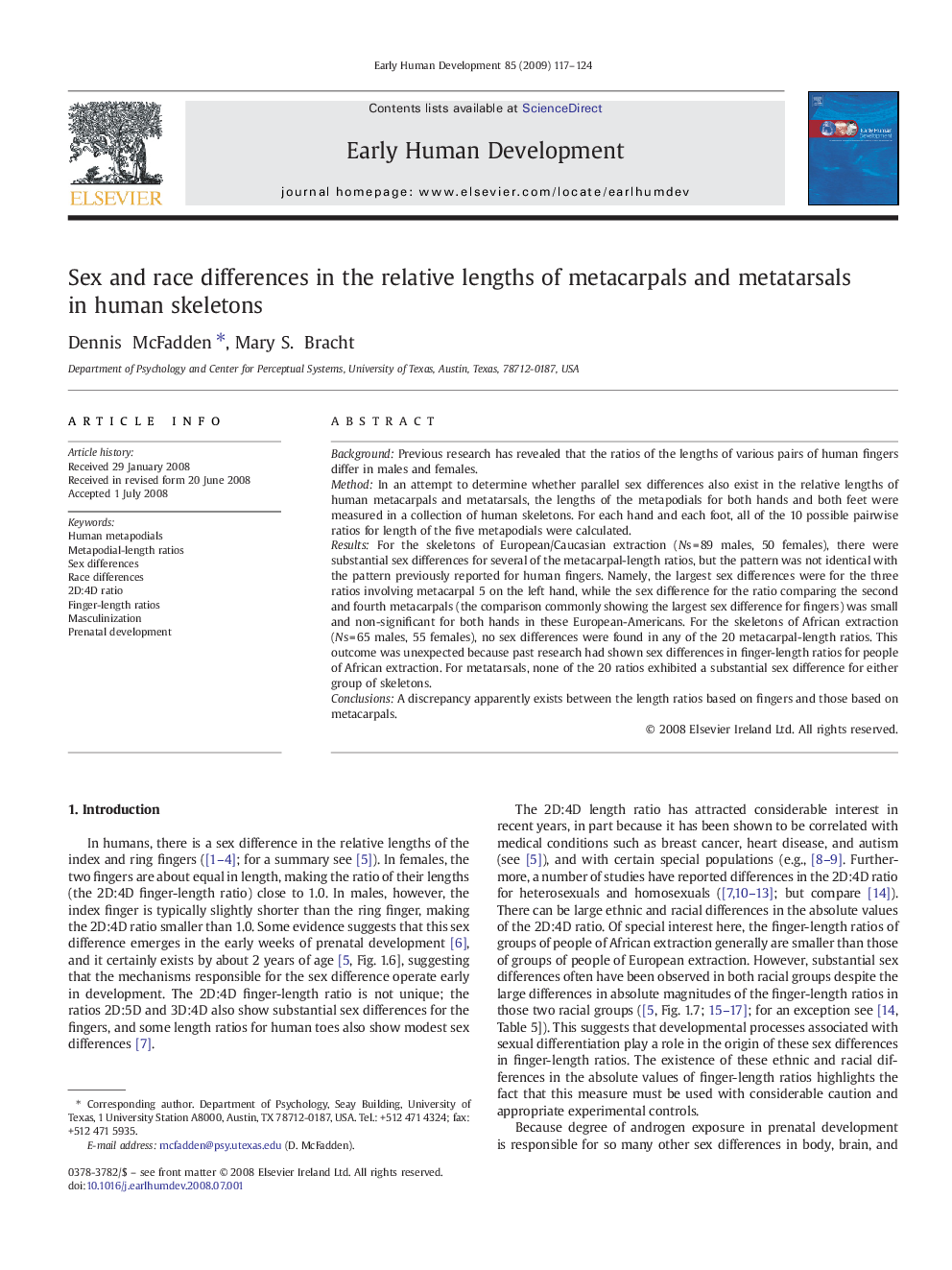| Article ID | Journal | Published Year | Pages | File Type |
|---|---|---|---|---|
| 3917587 | Early Human Development | 2009 | 8 Pages |
BackgroundPrevious research has revealed that the ratios of the lengths of various pairs of human fingers differ in males and females.MethodIn an attempt to determine whether parallel sex differences also exist in the relative lengths of human metacarpals and metatarsals, the lengths of the metapodials for both hands and both feet were measured in a collection of human skeletons. For each hand and each foot, all of the 10 possible pairwise ratios for length of the five metapodials were calculated.ResultsFor the skeletons of European/Caucasian extraction (Ns = 89 males, 50 females), there were substantial sex differences for several of the metacarpal-length ratios, but the pattern was not identical with the pattern previously reported for human fingers. Namely, the largest sex differences were for the three ratios involving metacarpal 5 on the left hand, while the sex difference for the ratio comparing the second and fourth metacarpals (the comparison commonly showing the largest sex difference for fingers) was small and non-significant for both hands in these European-Americans. For the skeletons of African extraction (Ns = 65 males, 55 females), no sex differences were found in any of the 20 metacarpal-length ratios. This outcome was unexpected because past research had shown sex differences in finger-length ratios for people of African extraction. For metatarsals, none of the 20 ratios exhibited a substantial sex difference for either group of skeletons.ConclusionsA discrepancy apparently exists between the length ratios based on fingers and those based on metacarpals.
